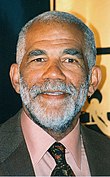User:Allard
Hello and a warm welcome to all my fellow Wikipedians. How nice of you to drop in to see who I am!
Morning>
Wikipedia & me:[edit]
How I discovered Wikipedia, I do not remember. But from being a reader I slowly became a contributor. Although I don't work that much on Wikipedia I do see myself as a Wikipedian. I don't go searching on Wikipedia what I can edit next, I edit what I find and want to do. This means I add and mainly improve a lot of small things and only rarely I make large edits.
My work:[edit]
Articles I've started on Wikipedia:
- Fort Knox Bullion Depository
- Animals are Beautiful People
- Template:David Attenborough Television Series
- Template:Malta Islands
Images I made for Wikipedia:
 Dutch lower house as from 2006
Dutch lower house as from 2006 New image of the Netherlands Air Force Roundel
New image of the Netherlands Air Force RoundelMap on membership of the League of Nations
United Nations membership map
 Improved image of the British Helgoland flag
Improved image of the British Helgoland flag New image showing the current flag of Hel(i)goland
New image showing the current flag of Hel(i)goland
Article guide:[edit]
A list of articles worth looking at, if one can find them:
- Antidisestablishmentarianism
- Ball's Pyramid
- British Isles (terminology)
- Eadweard Muybridge
- Gunpowder Plot
- Horace de Vere Cole
- Humphrey (cat)
- Islomania
- List of countries by date of nationhood
- List of flags
- List of people who died on their birthdays
- List of regnal numerals of future British monarchs
- List of unusual deaths
- Northwest Angle
- Quadripoint
- Racetrack Playa
- Rule of tincture
- San Gimignano
- Transcontinental country
- Undivided India & Partition of India
- Voyager Golden Record
- Web colors
- Winchester Mystery House
And there's always the Random article
And to all citizens of the European Union, please read this: Oneseat.eu
News[edit]
- Hurricane Beryl, the earliest-recorded Category 5 Atlantic Hurricane, kills at least 22 people in the Caribbean and Venezuela.
- In the Netherlands, a new cabinet is sworn in, with Dick Schoof (pictured) serving as the prime minister.
- A crowd crush during a religious event in Uttar Pradesh, India, leaves at least 110 people dead.
- José Raúl Mulino becomes the president of Panama after winning the general election.
- In cricket, the T20 World Cup concludes with India defeating South Africa in the final.
Selected anniversaries[edit]
July 5: Fifth of July in New York
- 1841 – Thomas Cook, the founder of the British travel company Thomas Cook & Son, organised his first excursion, escorting about 500 people from Leicester to Loughborough.
- 1924 – Brazilian Army rebels launched an uprising in São Paulo against President Artur Bernardes, who authorized the bombing of the city in response.
- 1950 – Korean War: In the first encounter between North Korean and American forces, an unprepared and undisciplined U.S. Army task force was routed at the Battle of Osan.
- 1969 – Two days after the death of their founder Brian Jones, the Rolling Stones performed at a free festival in Hyde Park, London, in front of more than a quarter of a million fans.
- 2009 – The Staffordshire Hoard, the largest collection of Anglo-Saxon gold ever discovered, consisting of more than 1,500 items (examples pictured), was found near Hammerwich in Staffordshire.
- W. T. Stead (b. 1849)
- Thomas Playford IV (b. 1896)
- Kate Gynther (b. 1982)
- Ted Williams (d. 2002)
Did you know...[edit]
- ... that much of what we know of medieval gardens comes from illuminated manuscripts (example pictured)?
- ... that Mark Hutton was the first Australian to be a starting pitcher in a Major League Baseball game?
- ... that two of three candidates in the 2018 mayoral race in Malang, Indonesia, were arrested for bribery before the election?
- ... that Gladys Stone Wright got started with a year of free piano lessons and a $5 clarinet?
- ... that "At the Name of Jesus" has been described as "the only completely objective theological hymn to come from the hand of a 19th-century woman writer"?
- ... that Liza Soberano's early acting roles include playing the third wheel in romance films?
- ... that Maryland state delegate C. T. Wilson compared negotiating with the Catholic Church on the Maryland Child Victims Act to making "a deal with the devil"?
- ... that educational writer Ștefan Tita gave Romanian students impractical advice on mending damaged bark with bandages of dirt?
- ... that Eminem promoted "Houdini" with a video in which David Blaine eats a wine glass?
Today's featured article[edit]
Ed Bradley (1941–2006) was an American broadcast journalist best known for reporting with 60 Minutes and CBS News. Bradley started his television news career in 1971 as a stringer for CBS at the Paris Peace Accords. He won Alfred I. duPont and George Polk awards for his coverage of the Vietnam War and the Cambodian Civil War. Returning to the United States, he became CBS's first Black White House correspondent. Bradley joined 60 Minutes in 1981 and reported on more than 500 stories with the program during his career, the most of any of his colleagues. Known for his fashion sense and disarming demeanor, Bradley won numerous journalism awards for his reporting, which has been credited with prompting federal investigations into psychiatric hospitals, lowering the cost of drugs used to treat HIV/AIDS, and ensuring that the accused in the Duke lacrosse case received a fair trial. He died of lymphocytic leukemia in 2006. (Full article...)











